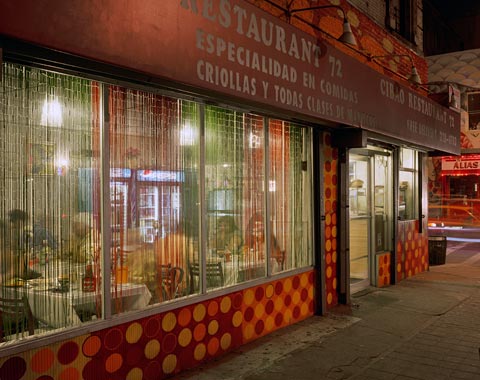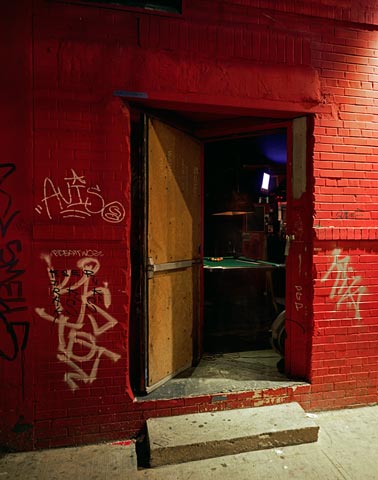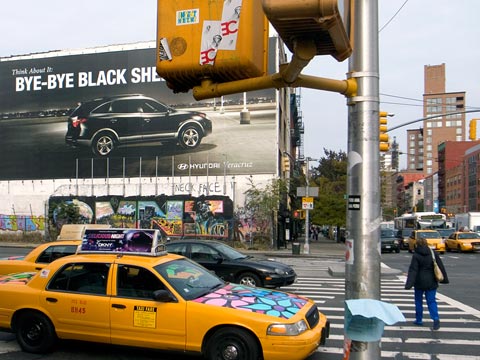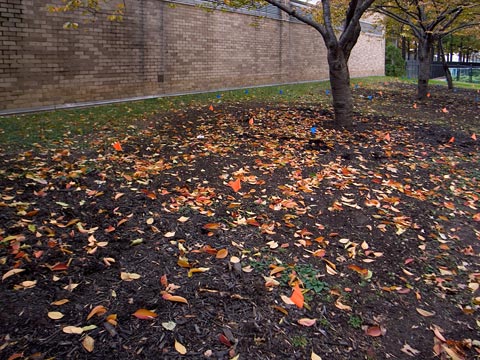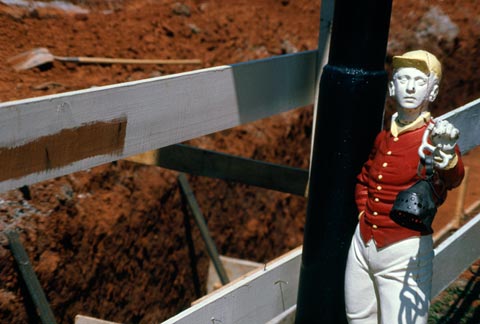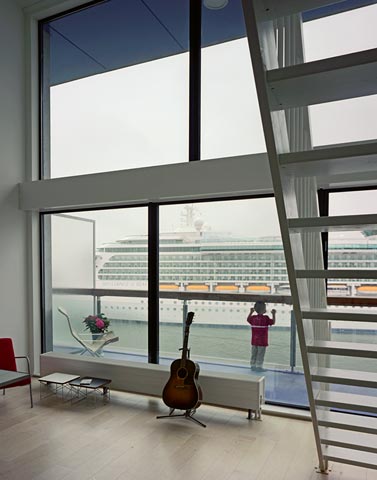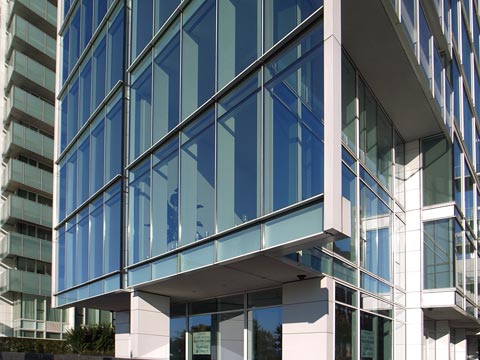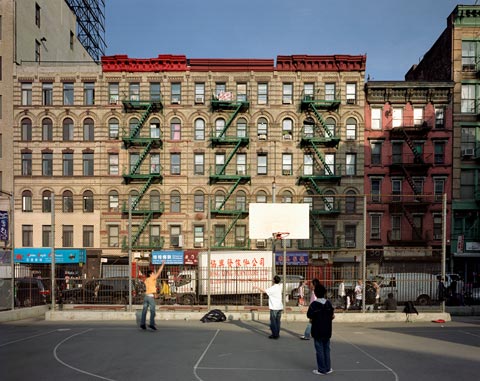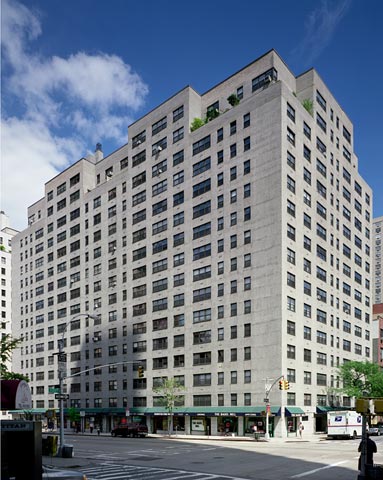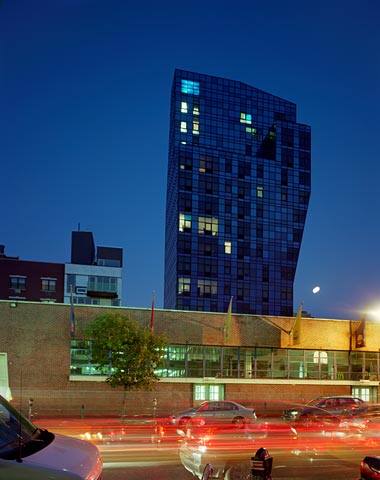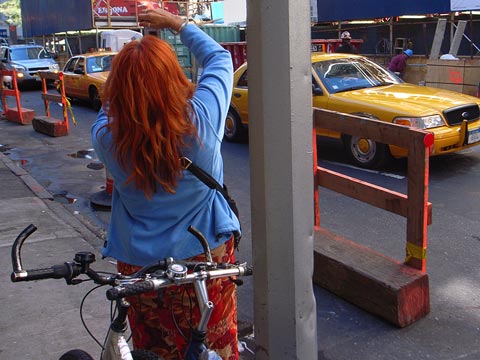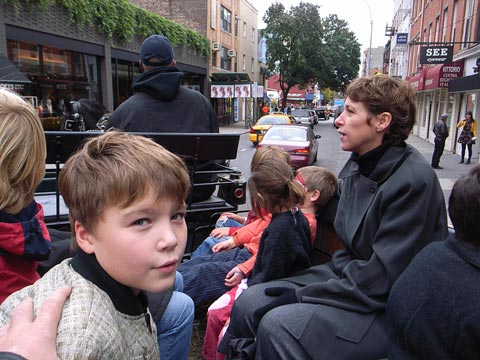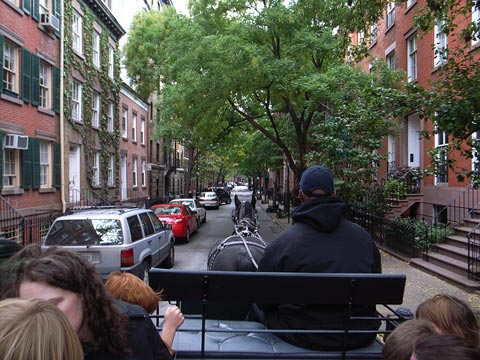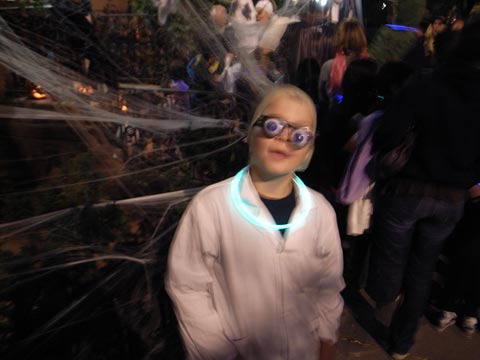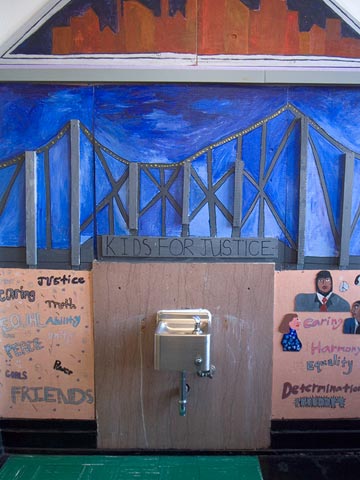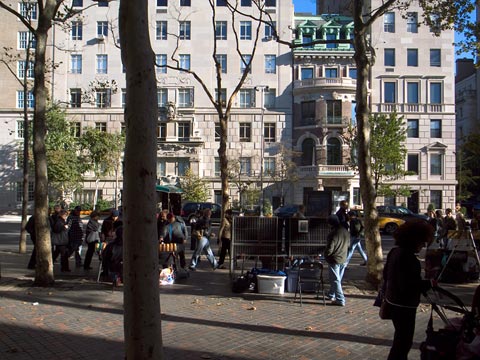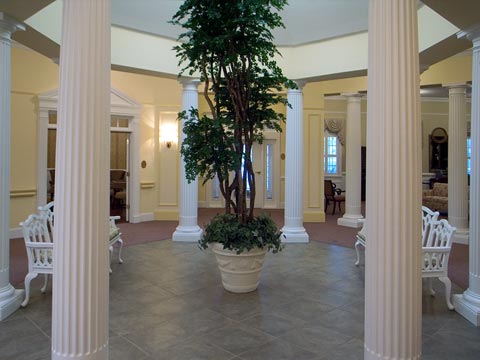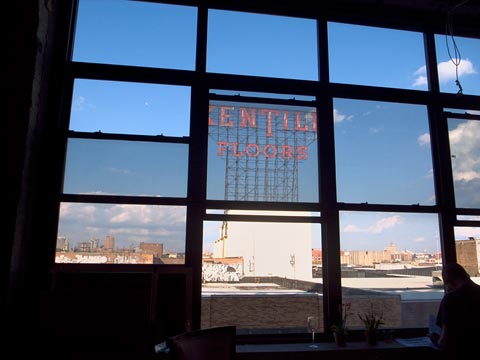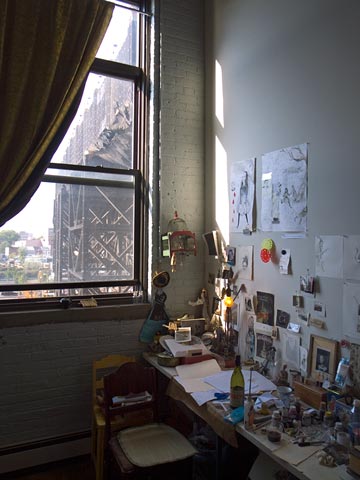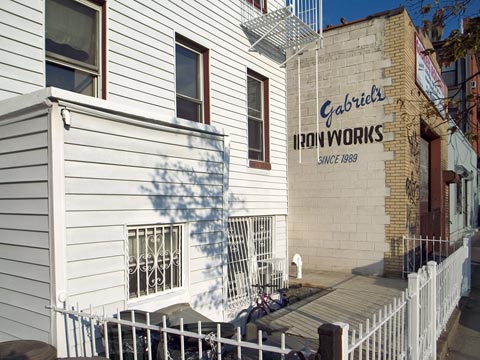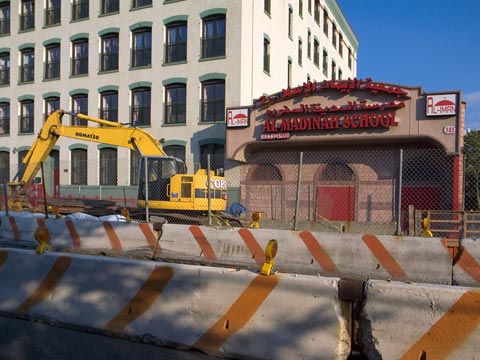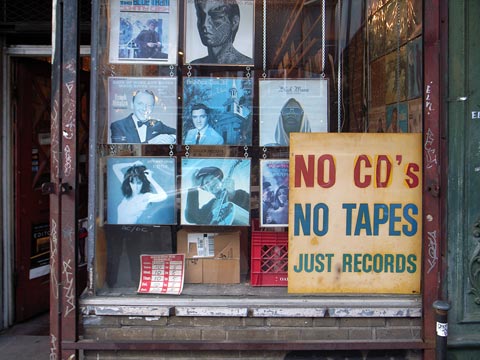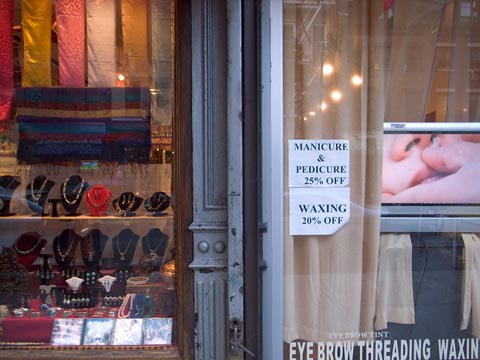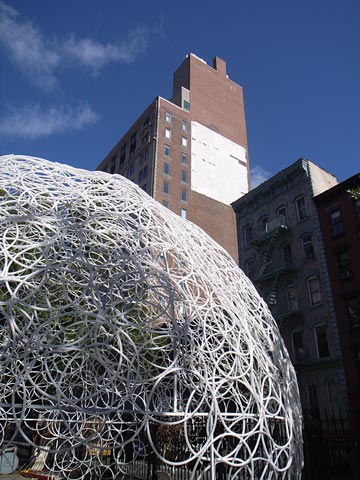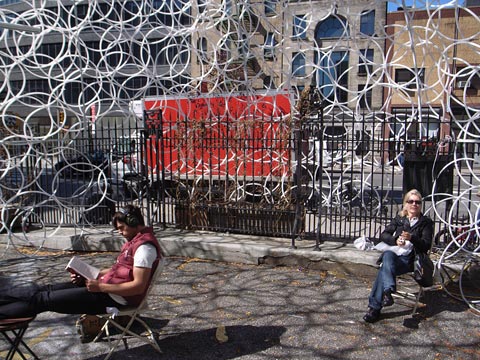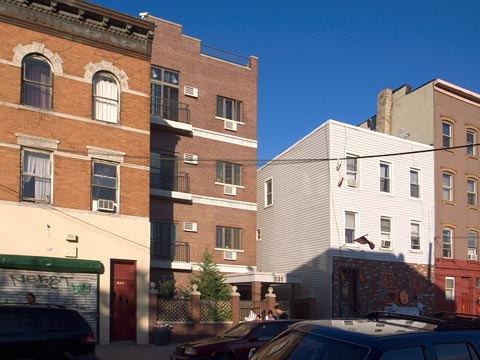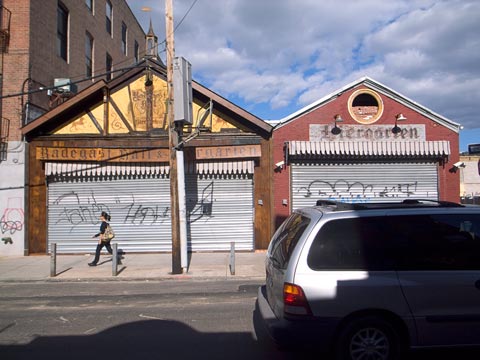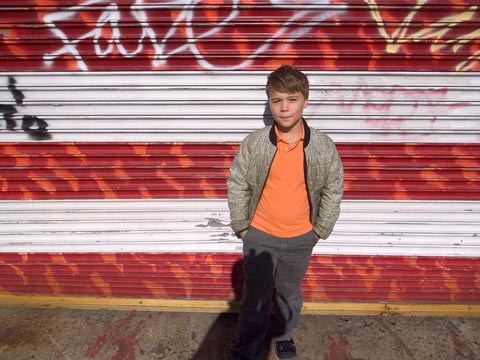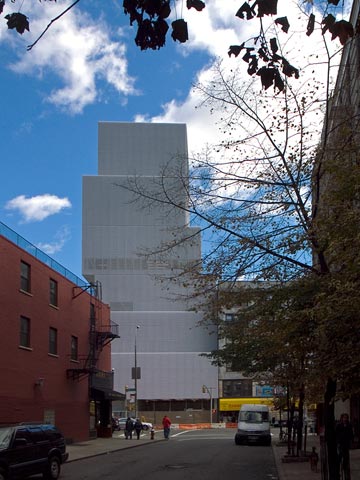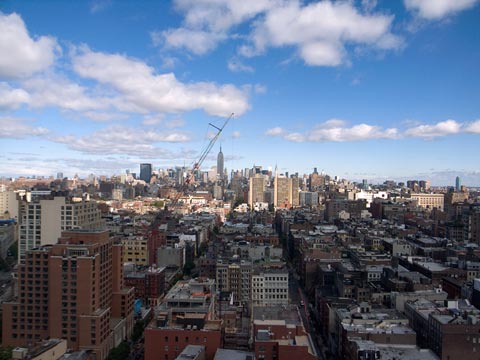Take what may be called “the” typical tenement house district, the triangle or rather trapezium, bounded by Fourteenth Street, the Bowery and the East River. This district comprises the even numbered Assembly Districts from the Fourth to the Sixteenth, inclusive, and the population of it is just short of half a million, 480,626. It is thus in itself the second city in the State of New York.
It is perhaps the most crowded district in the world. Part of it certainly carry congestion to the utmost limits. The normal habitation is the “double decker” tenement, four families to the floor, five floors high, often six, sometimes, by dint of a high stoop and a basement for shops, seven. And this population in a large measure and particularly in hot weather lives on the sidewalks. There are squares where it is hard to make one’s way, for the absolute pressure of the crowds of sitters and standers.
-New York Times, July 21, 1901
On Friday I did a three hour Lower East Side walk. Moving slowly, I covered a relatively small area, but took about a dozen photos with the view camera. The first spot I got to was of a vacant lot I photographed in 1980 with a mural of a baseball game on an adjacent wall. The painting had faded, but was still visible. A few days ago I noticed that the wall was in the process of being torn down. When I arrived yesterday, it was mostly gone, and a fence obscured the view, though I did a shot of it anyway.
Around the corner on Pitt Street, I photographed a large Catholic church and tenements next door. It was a crisp fall day, and the light was beautiful. I moved on down Pitt Street toward the Williamsburg Bridge and did a couple more photographs on the same side of the street.
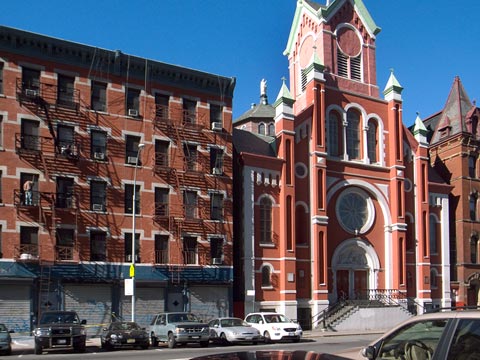
Our Lady of Sorrows church, Pitt Street
The church, Our Lady of Sorrows, was apparently once called St. Aloysius and had a largely German congregation according to the 1901 New York Times column quoted above:
There is a remarkable church, remarkable for the spaciousness and gorgeousness of its interior in such a region, St. Aloysius in Pitt Street, attached to the Capuchin monastery at Pitt and Stanton. How many readers of this paper know that there is such an institution in New York as a monastery of barefooted Capuchin friars?
This church holds its services in German, and it is a curious testimony to the changing conditions of its neighborhood that the authorities report that its congregation has sadly fallen off of late years by reason of the migration of its parishioners.
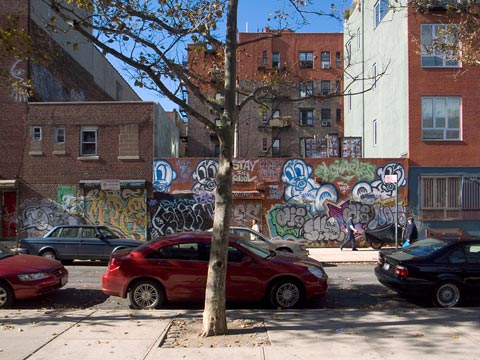
Attorney Street
I turned the corner at Delancey Street and walked west, turning again into Attorney Street. I mad two photographs in the street including one with a graffitied wall by Andre Charles with his street logo “Brandon,” a baby with a pacifier in its mouth. Charles’ stuff is pretty good, and on his website he writes:
But through out the year’s I was painting walls, doing night clubs, running with the lady’s, which is all part of being a famous urban super star artist from the hood. I really didn’t understand what I was really doing or what was going on around me. All I know is when I look at T.V., pictures in art books of other artist. I wanted to be famous just like them. So I went out to do what I’ve seen as a young entrepreneur black boy from the SOUTH BRONX running after my dreams.
He goes on to thank God for his gift, which, despite the modesty/bravado is significant. All the graffiti writers, including Charles, ramble on about Keith Haring, who I remember seeing at work in the subway, and Basquiat, the painter who spun out of control and died of a drug overdose in his studio, a block from where I lived at the time. A Basquiat website states:
Basquiat.com is a tribute to Jean-Michel Basquiat (1960-1988), an artist who came to personify the art scene of the 80s, with its merging of youth culture, money, hype, excess, and self-destruction.
Okay. I guess that sums up the 80s. Some of us missed out on the money, hype, excess and self-destruction, but at least we’re still here making art.
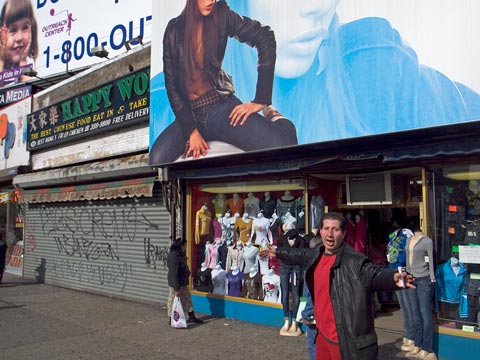
Delancey Street
Back out on Delancey Street I did a photograph of the window of a fast food restaurant, and then planted my tripod in front of a row of shops that I’ve photographed before. Delancey is a ragged concourse of discount shops that cater to the Latino population of the neighborhood and beyond. It’s long been a shopping destination. Million dollar apartments are now sprinkled in among the discounts and cheap chains, a dissonance nearly impossible to express in photographs except by means of crude juxtaposition, which I try to avoid.
As I began doing a series of pictures of the storefront of a clothing shop with a wonderful array of signage above, the owner/manager came out and we chatted about the changes in the neighborhood. He’d been around since the early 70s. He told me that the shuttered shop to the left and several others in the row are coming down to make way for another condo project. We agreed, however, that, whatever happens, there will always be people who need discount. As I fiddled with the view camera a crazy/drugged man veered in front of me. So, I snapped.
